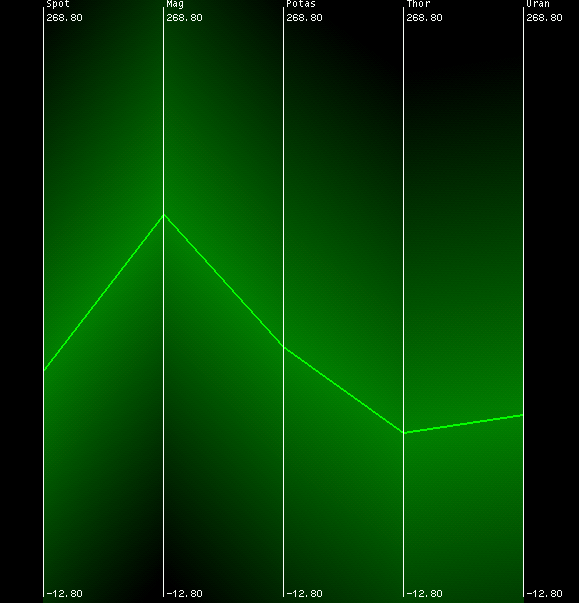


Next:Multiresolutional
Cluster DisplayUp:Hierarchical
Parallel CoordinatesPrevious:Hierarchical
Clustering
Visualizing Clusters
Each node Ti in a hierarchical cluster tree T
represents a nested collection of enclosed data points or sub-clusters.
The node contains a summary of all points and sub-clusters rooted from
it. The following information may be directly obtained from Ti.
-
ni : the number of data points enclosed.
-
mi : the mean of the data points.
-
Bi : the extents, i.e. the minimum and maximum bounds
of the cluster for each dimension.
-
vi : a measure of the size of cluster Ti.
-
li : the tree depth at node Ti
vi is a computed measure of a cluster size and satisfies
the following criteria: If Ti is an ancestor of Tj,
then
vi
> vj
The value of vi is directly dependent on the shape
of the clusters produced by the clustering algorithm. For spherical clusters,
vi
may be the radius of a cluster. For rectangular clusters,
vi
may be the
N-dimensional volume of the cluster.
In parallel coordinates, we display the information at a node by making
use of variable-width opacity bands. Figure 2
shows a graduated band that visually encodes the information for a cluster.
The mean stretches across the middle of the band and is encoded with the
deepest opacity. The deepest opacity is a function of the density of a
cluster, defined as the ratio  .
The top and bottom edges of the band have full transparency. The opacity
across the rest of the band is linearly interpolated. The thickness of
the band across each axis section represents the extents of the cluster
in that dimension.
.
The top and bottom edges of the band have full transparency. The opacity
across the rest of the band is linearly interpolated. The thickness of
the band across each axis section represents the extents of the cluster
in that dimension.
Figure 2:A single multi-dimensional graduated
band that visually encodes information at a cluster node.
 |



Next:Multiresolutional
Cluster DisplayUp:Hierarchical
Parallel CoordinatesPrevious:Hierarchical
Clustering
![]() .
The top and bottom edges of the band have full transparency. The opacity
across the rest of the band is linearly interpolated. The thickness of
the band across each axis section represents the extents of the cluster
in that dimension.
.
The top and bottom edges of the band have full transparency. The opacity
across the rest of the band is linearly interpolated. The thickness of
the band across each axis section represents the extents of the cluster
in that dimension.
